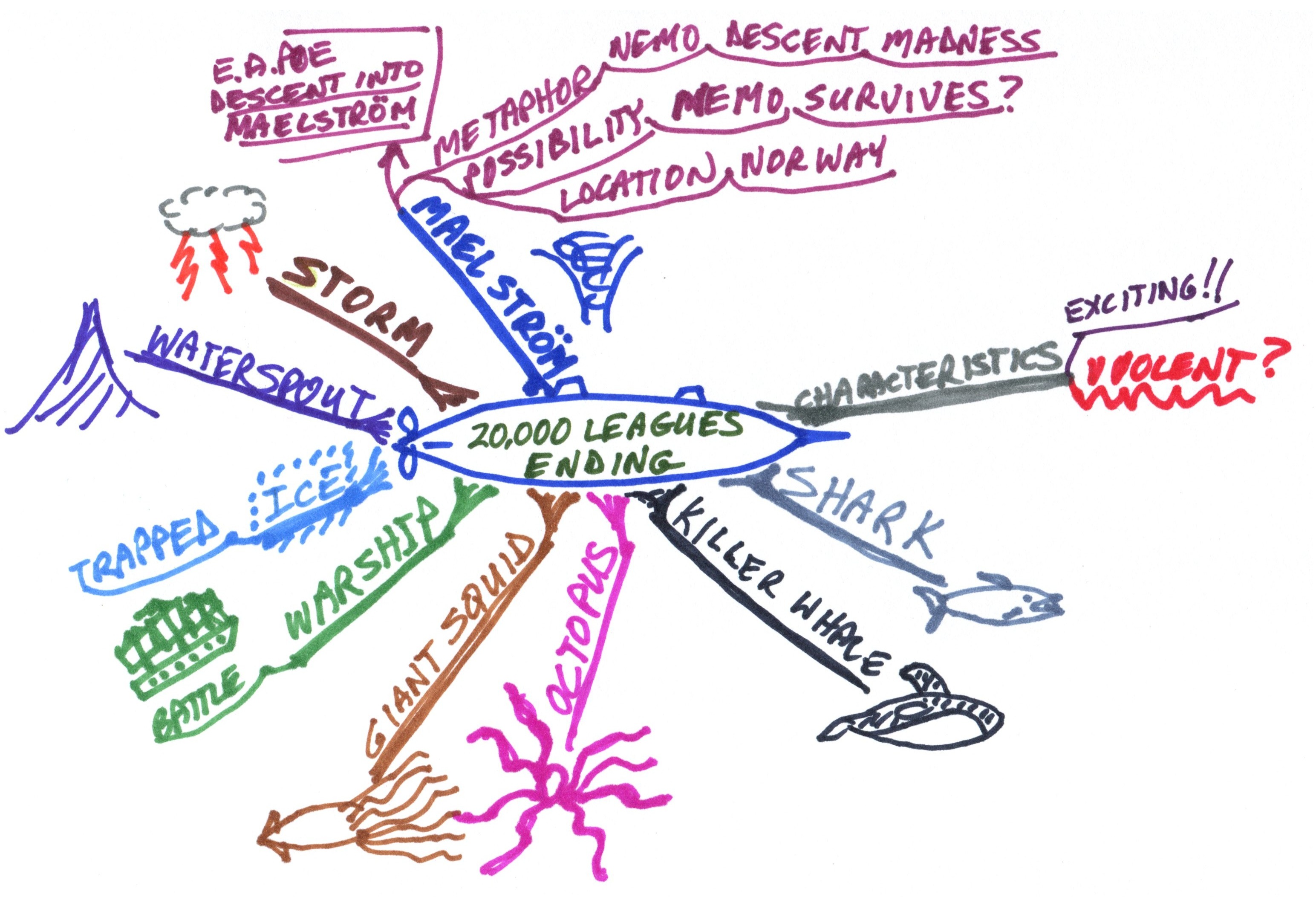The concept of mind mapping has come up in my blog entries before, as a suggested tool to help writers. I’ve said you can use mind maps for outlining, to improve your creativity, and to solve pesky plotting problems. But what exactly is a mind map, and how does it work?
 A mind map is a way of organizing and illustrating thoughts about a topic. I learned about the technique from reading Use Both Sides of Your Brain, by Tony Buzan. It contrasts quite a bit from other note-taking methods like the I.A.1.(a)(1)(i) outlining method you learned in school. I’ve found it to be more intuitive, less messy, and easier to remember than other methods. I use my own variant of mind mapping any time I need to organize thoughts: note-taking during meetings at work, planning my day, planning a vacation. And, oh yeah, I use mind-mapping to aid in my writing.
A mind map is a way of organizing and illustrating thoughts about a topic. I learned about the technique from reading Use Both Sides of Your Brain, by Tony Buzan. It contrasts quite a bit from other note-taking methods like the I.A.1.(a)(1)(i) outlining method you learned in school. I’ve found it to be more intuitive, less messy, and easier to remember than other methods. I use my own variant of mind mapping any time I need to organize thoughts: note-taking during meetings at work, planning my day, planning a vacation. And, oh yeah, I use mind-mapping to aid in my writing.
How do you construct a mind map? I’ll give only a quick description here; I recommend you read Buzan’s book, or at a minimum read descriptions of the technique elsewhere online.
- Start in the center with an image of the topic.
- Write key words around the central image using upper case letters.
- Underline each key word.
- Use lines to link the underlined key words to your central image and to each other to illustrate connections.
- Use images and symbols throughout, in addition to key words. (Don’t worry if you think you can’t draw decent pictures; no one but you will see your mind map.)
- Use multiple colors to separate thoughts, and to link similar thoughts.
- Continue branching out from the center, expanding the thoughts and linking related ideas.
The best way to explain what that all means is to show you a mind map. I’ve said you can use mind maps to solve writing problems, so let’s see a hypothetical example. Let’s say you’re Jules Verne and you’re working on a book with a working title of 20,000 Leagues Under the Sea. You’re outlining the major events of the book and you want to finish with an appropriate, memorable ending, one with a big impact and one that fits the novel’s major themes. You could make a list of possible endings, then go back and list pros and cons for each option, then choose the best one. Or you could construct a mind map.
(Set aside for the moment, that [1] mind-mapping hadn’t been invented at the time, and [2] Verne did not write in English.)
In a more complete mind-map, Verne would have continued branching from each option, with pros and cons. I’ve violated a few mind map rules in this example, but my overall point is for you to see how you could use the technique to aid your writing.
Stuck for an idea what to write about? Write down key words that resonate with you, even if apparently unrelated. Go fast and fill up a page with words and pictures. Now pause and look for natural associations. Re-do the mind map if necessary to keep it clean and neat. Now, in a different color, try connecting some unrelated ideas. Do any of these clashing notions suggest a possible story?
Not sure how to plot your story? Mind-map the story’s scenes, with branches describing why they occur and how the characters change or learn things from each event. That should make it apparent if you have unnecessary scenes, scenes in the wrong order, or if you’re missing some scenes you need.
Possible uses for mind-mapping are limited only by your imagination. In other words, there are no limits. Can you see yourself using this technique? Have you ever done so? Share your ideas about mind-mapping by leaving a comment. This blog post has been brought to you by both the left and right sides of the brain of–
Poseidon’s Scribe

